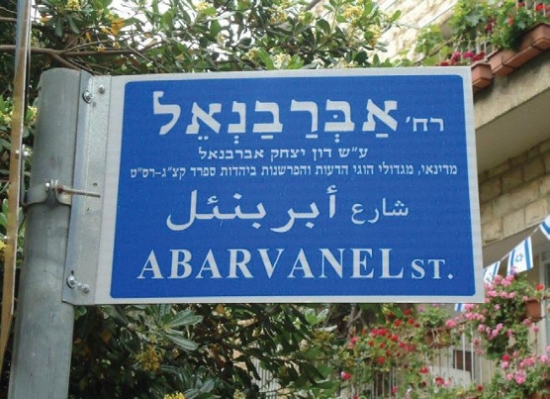
It was about three months before the outbreak of the Six Day War when I first saw the House on Abarbanel Street. It was my first date with my future wife. Her place was located on a tiny, picturesque, tree-lined, one-lane street in the Jerusalem neighborhood of Rechavia. The residence had a small garden and was constructed of giant Jerusalem stone. On the outside garden wall there was a small nameplate that read Prof. Felix Sulman, M.D., D.V.M.
I was nervous and apprehensive. I had only been in Israel for a year, having come as a volunteer. When my group returned to America after a year, I remained and had just started working at Israel Radio. At that time I was entering what was, for me, a new and strange neighborhood, and taking out a young lady I knew nothing about.
A handsome, elderly woman opened the door and introduced herself as Edit Sulman. She left me alone in their living room while she went and told her daughter of my arrival. I heard classical music coming from another room, and as I waited I started examining the place in more detail. The walls were almost a yard thick and the ceilings were very high. There was absolutely nothing modern here. The interior design was a combination of hippy, Retro, Bauhaus and Arabic. The living room had a library crammed with books on art, Jewish and Israeli history, biographies of Plato, Spinoza, Ben Gurion, Leonard Bernstein, Archeology of the Holy Land, all the works of Shakespeare and numerous books on anatomy, pharmacology, climate and hormone research. Knick-knacks and small sculptures were all over the place. It was organized clutter from the floor to the ceiling. I loved it, but knew in my heart that I was entering some sort of intellectual world that I had never encountered in my 26 years. My house in Los Angeles was filled with Life magazines, bills to be paid, advertisements from Sears and tickets to a Dodger game.
Who were these people? What was going on around here?
Just then music from the tape machine got louder as the door of one of the rooms opened and I met Felix Sulman for the first time. He was distinguished looking, of medium height and reminded me of the actor Sir Laurence Olivier. Straight away he asked me to move the piano from the dining room to the living room. His choir was coming in an hour and it was time to arrange the living room with chairs, the piano, his music stand and a table with refreshments. He showed me the exact spot where he wanted the instrument and I obliged and continued this activity for the next 27 years. By marrying his daughter, I became the official piano mover for his choir rehearsals every other Saturday night.
Every once in a while I am reminded of that period of my life. Usually it is in the spring and early fall, for this is the time of the internationally famous Abu Ghosh Music Festival. Felix Sulman was the founder of this festival. He, together with his wife and a few friends discovered a simple church with amazing acoustics just after Israel’s War of Independence. It was located in the small Arab village of Abu Ghosh in the hills of Jerusalem. They sang Bach, had a picnic and came back the next week with more people. By the early 1950s this minor musical event had turned into Israel’s version of the Tanglewood Festival, the Lincoln Center’s outdoor festival, Carmel’s Bach Festival and the Hollywood Bowl. Today it has reached an international standard with noted musicians, choirs and conductors from all over the world performing Mendelssohn, Schubert, Bach and Mozart. But the original seeds of this festival, organization, rehearsals and sweat took place in the House on Abarbanel Street.
As with so many German Jews, my wife’s parents came to Israel in 1933 and moved to Abarbanel Street in 1938. The entire neighborhood of Rechavia became a mecca for the Jews leaving Germany at this time. In addition to my father- in law’s solid musical background, he came to Israel with degrees in medicine and in veterinary medicine. He was able to treat humans and their pets at one sitting. He further enhanced his career by going into hormone research at the Hebrew University.
By the time I entered the picture in the 1960s, Felix was Professor Emeritus and head of the Department of Applied Pharmacology at the Hebrew University. He had written numerous important scientific books on hormones and climate and was now a star in the scientific community all over the world.
Edith was no slouch either. She was also a scientist, pioneering pregnancy testing in the small lab they had in the House on Abarbanel Street. A normal day could go something like this. They would receive patients with the flu, people with dogs that refused to eat, women checking to see if they were pregnant and members of his choir discussing a certain passage in the Brahms Requiem. On any particular day, Edith could write her memoir, edit some scientific papers of her husband’s, check her lab rats, give advice to her older daughter on a paper she was writing about Socrates, wander over to her younger daughter and help her with a paper on Jane Austen or Mark Twain, and finally glance over at me and suggest certain people to interview or topics for my radio program. It was as if the House on Abarbanel Street was draped in some sort of Renaissance cloak.
There were always guests at dinner time - internationally famous Nobel Laureates, Supreme Court judges, professors of English Literature, conductors, kibbutzniks, writers and even a few politicians.
Today I consider myself so lucky and privileged, to have been a part of this exclusive environment of the Rechavia neighborhood of Jerusalem for 27 years. Sadly, when my in-laws passed away the house was sold. However, the memories have remained constant with my wife, her childhood friends and me. Four years ago, on Israel’s Independence Day, Rechavia presented a guided living historical walking tour. As people entered Abarbanel Street, there was a real choir singing a lovely Bach Cantata right there in front of the house. It was a reminder of what had gone on in the House on Abarbanel Street and who had lived there.
________________________________________________

Jerry Stevenson has an MFA from UCLA in television and film, worked for the Israel Broadcasting Authority as a producer and writer and then moved on to business. He now lives with his wife in Talbiah Jerusalem, a five minute walk from the House on Abarbanel Street.
This story received honorable mention in ESRA MAGAZINE’s Short Story Competition, in 2009.
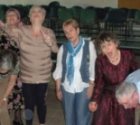 Let’s have a bit of Playback
Let’s have a bit of Playback-1372659501.jpg) Buying New Construction in Israel
Buying New Construction in Israel A lot of hot air - ballooning
A lot of hot air - ballooning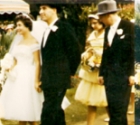 Bridesmaid recalls a very special day 59 years ago
Bridesmaid recalls a very special day 59 years ago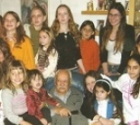 Harry Berman
Harry Berman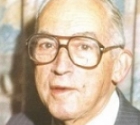 Sam Levin
Sam Levin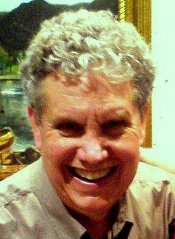 Jerry Stevenson
Jerry Stevenson